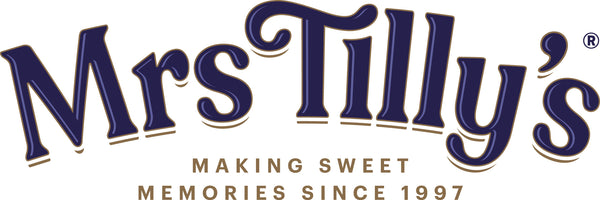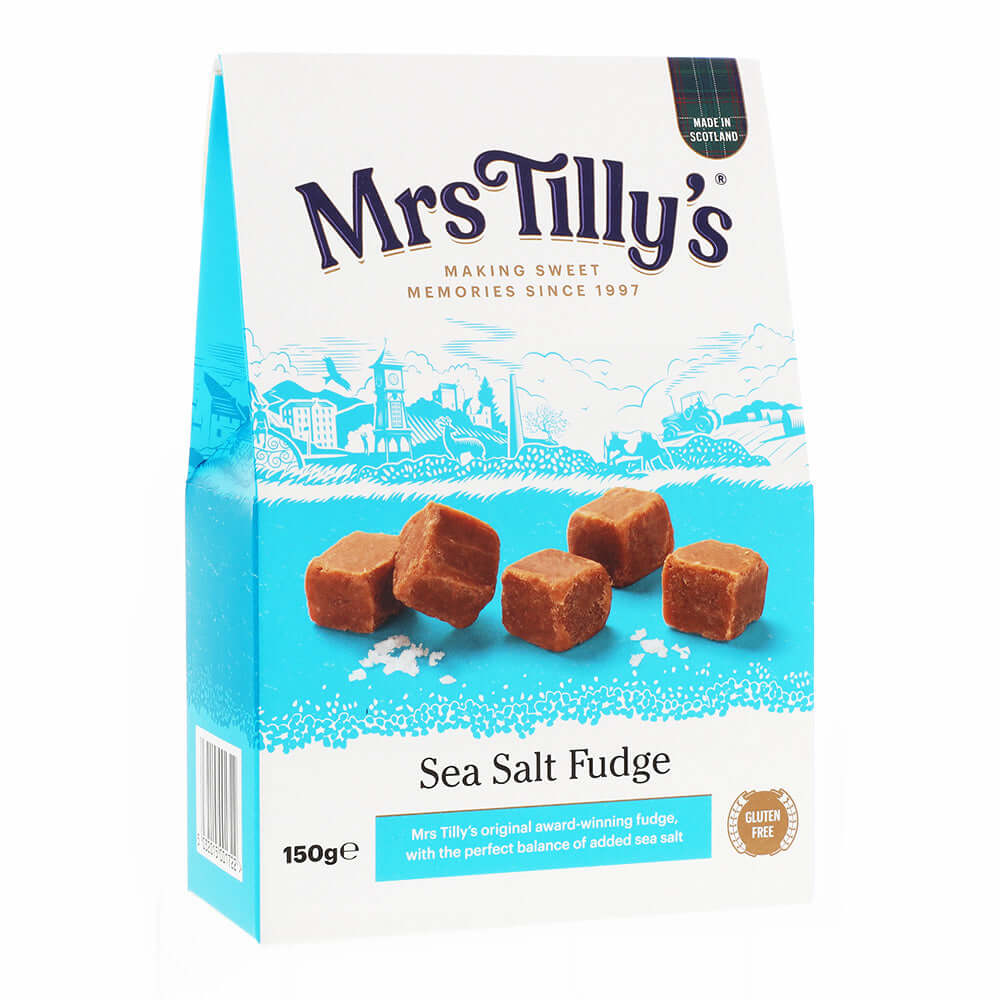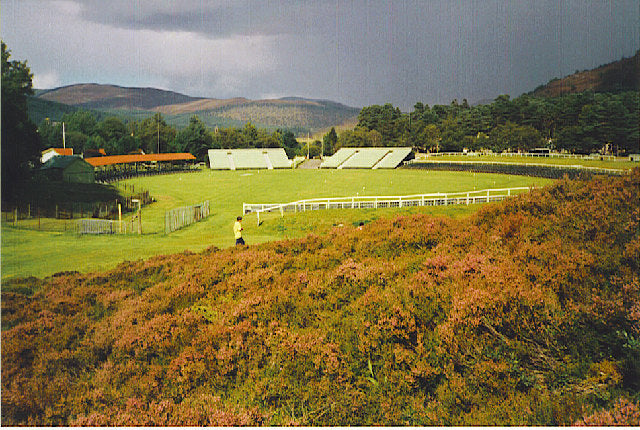Scottish macaroon bars are a classic. You’ll find them in corner shops, cafés, and old-fashioned sweetie jars all over the country. On the outside, they’re simple: a chocolate coating, a dusting of coconut, and a soft white centre. But the story behind them is anything but ordinary. These sweets started as a clever way to use up leftovers and ended up as one of Scotland’s best-loved treats.
From Kitchen Mistake to Scottish Macaroon Classic
The story goes back to 1931, in the town of Coatbridge near Glasgow. John Justice Lees, son of a grocer, was working above his father’s shop. He was trying to make a smooth chocolate fondant bar. But the mix didn’t come out right. Too soft. Instead of binning it, he covered the batch in chocolate and rolled it in coconut. The texture worked. People liked it. That simple fix became the start of something much bigger.
Lees went on to launch Lees of Scotland, the company that still makes macaroon bars today. Their factory is still in Coatbridge. Over time, the bar became one of Scotland’s most recognisable confections. The story behind it is a good example of Scottish practicality: make do, try again, and don’t waste what you’ve got.
Yes, There’s Potato in It
The original macaroon recipe used mashed potatoes. Cold leftovers from the night before were mixed with heaps of icing sugar to create a thick, sweet fondant. Then it was dipped in chocolate and rolled in desiccated coconut. The result was dense, rich, and surprisingly smooth.
Potatoes sound like an odd choice, but it works. They’re made up of about 80% water, which gives the fondant its moisture without adding much flavour. You can’t taste the potato. What you do get is a soft centre that holds its shape but melts in your mouth. The recipe originated from a time when ingredients had to be inexpensive, filling, and versatile. It’s a perfect example of that no-waste mindset that runs through a lot of old Scottish cooking.
Some people still use potatoes in homemade versions, especially for baking at home or selling at farmers' markets. But most commercial brands now use a sugar syrup mix. It’s made with sugar, glucose, and water, sometimes with egg white or gelatin, depending on the recipe.
The reason is simple: it keeps longer. Potato-based fondant goes off quickly, especially in warm weather. So shop-bought versions rely on a more stable formula.
What Sets Scottish Macaroons Apart
A lot of people mix up Scottish macaroons with French macarons or Italian amaretti. But they’re not even close. French macarons are meringue-based, come in bright colours, and are filled with cream or ganache. Amaretti are chewy biscuits made with almonds. Scottish macaroons don’t have any nuts. They’re heavier, plainer, and much sweeter. Less delicate, more direct.
They’re not meant to be fancy. That’s part of their charm. They’re the kind of treat you’d buy with pocket money or hand out after tea. Something to share, not show off.
Cultural Staple, Not Just a Sweet
For many people in Scotland, macaroon bars are wrapped up in childhood memories. They’re tied to trips to the corner shop, visits to grandparents, or packed lunches at school. If you grew up in Scotland, you’ve likely eaten one, maybe after unwrapping the foil and getting coconut stuck to your jumper.
They’re also a regular sight at weddings, bake sales, Christmas markets, and Highland games. You’ll find them stacked in sweetie jars beside tablet and fudge. It’s part of a bigger culture of simple, sugary treats made with everyday ingredients.
Lees of Scotland made the bar well known, but other makers like Mrs Tilly’s have kept the tradition going. Our macaroon bars stick to the basics: soft fondant centre, dark chocolate coating, and desiccated coconut, but with better consistency and high-quality ingredients.
Mrs Tilly’s Traditional Bars
Here is what we make when it comes to traditional bars:
Our version is one of the best-known takes on the traditional Scottish macaroon. The fondant is sweet and smooth, not too soft, and not chalky. The chocolate is rich enough to balance the sugar. The coconut adds texture without overpowering the rest.
Here’s what goes into our Macaroon Bars:
Sugar, Glucose Syrup, Dark Chocolate (12%) (Cocoa Mass, Sugar, Cocoa Butter, Emulsifier: Soya Lecithin, Natural Vanilla Flavouring) (Cocoa Solids 56%), Desiccated Coconut (8%), Whole Milk.
The recipe is modern, with no potatoes, but the taste and texture stay true to the original.
You can find our macaroons in supermarkets, corner shops, and online. We’re especially popular at Halloween and Christmas, either as gifts or to keep for yourself. We offer delivery throughout the UK, so it’s easy to order directly from our online shop and have them sent straight to your door.
How to Make Them at Home
Making macaroon bars at home is simple, though a bit messy. You don’t need fancy tools or hard-to-find ingredients. Just cold mashed potato, icing sugar, chocolate, and coconut.
The basic method:
- Mix mashed potato and icing sugar until thick and smooth
- Shape into bars or balls and chill until firm
- Dip in melted chocolate
- Roll in coconut and leave to set
That’s it. Some people toast the coconut first for a nuttier flavour. Others add flavouring like vanilla or peppermint to the fondant. But the base recipe doesn’t need much tweaking. If the mix gets too runny, just add more sugar. It can take a while to stir, so don’t rush it. Let the sugar absorb fully for the right consistency.
Halloween Ideas with a Scottish Twist
Macaroon bars are easy to adapt for Halloween, especially if you like doing themed bakes. The fondant is soft enough to shape, and the colour is pale enough to decorate. Here are a few things to try:
- Cupcakes: Cut macaroon bars into chunks and mix into cupcake batter. Bake as usual and top with chocolate icing and Halloween sprinkles
- Fondant Ghosts: Shape the fondant into small ghost figures. Dip in chocolate and coconut. Add candy eyes for decoration
- Sweet Platters: Chop bars into bite-sized pieces and arrange with tablet, fudge, and other old-school Scottish sweets. Use labels like “Monster Munch” or “Witch’s Bars” for fun
- Gift Bags: Wrap bars in cellophane with black and orange ribbon. Great for party favours or handing out to trick-or-treaters
Nutrition Facts
Scottish macaroons are sweet. Very sweet. That’s part of what makes them work — but it also means they’re best enjoyed in moderation.
Per 100g:
- Energy: 1707kJ / 404kcal
- Fat: 7.7g
- Saturated Fat: 6.7g
- Carbohydrates: 82g
- Sugars: 67g
- Protein: 0.7g
- Salt: 0.10g
They’re a treat, not a health food. One bar won’t hurt, but it’s not something to eat every day. If you’ve never tried one, start with our traditional Macaroon bars. You can place your order now!



